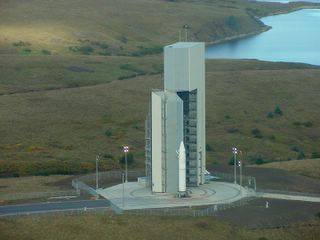Friday, March 04, 2005
Dear DNR:
Here are my comments concerning the draft decision to allow AADC permits to enforce “temporary” closures of additional lands surrounding the KLC. The decision should be changed to deny AADC’s request.
AADC has not demonstrated a compelling need for such closures. Although their letter to DNR dated January 27, 2004, stated that their contract with DOD required said closures, your decision states that there are no contractual requirements for the closures. Was the January statement untrue? So, then, who has decided that national security requires closures and for what specific, provable reasons? The decision that national security requires closures is arbitrary and without foundation.
The vague term “national security” is repeatedly referred to without any proof that any threat, actual or potential, exists at the Kodiak Launch Complex. AADC should be required to submit a risk assessment that would specifically list potential risks and their probability of occurrence. Without a comprehensive, documented study, any talk of risks has no concrete basis in fact. It is speculation at best and what is that speculation based on? The terrorist acts of 9/11 that occurred 4 years and 4000 miles away? Hardly an adequate basis for assuming there are terrorist risks at the KLC.
And the key word here is “assuming” – it is bad policy to base your decision on unproven assumptions.
I feel it is important to emphasize this point and repeat it: No evidence has been submitted that an actual threat exists at the KLC, nor has any evidence been presented as to any potential threats.
Furthermore, who decides if a launch is to be categorized as “classified”? It would appear that AADC can just state it without verification. Verification of a launch being “classified” in writing must be required from the relevant agencies (Dept of Defense, Missile Defense Agency). These agencies must justify in writing the reasons for the launch being “classified”.
AADC should be required to make public notice when they apply for a permit for road closures so, at the very least, the public can plan for said closures. The public should be allowed to comment on every application for closures.
The draft decision states that closures will be short and minimal. The December launch that was part of a failed missile defense system test belies that statement. The road was closed for at least 6 consecutive days for a minimum of 9 hours each day. For all intents and purposes, the area was closed for a week to all activities. When I wanted to hiking to Pasagshak Point, I was informed by Pat Ladner himself that if I was not below the switchbacks by noon, he would send security to remove me from the area. Thus, one would have to engage in activities early in the morning or very late at night and be sure to be out of the area by noon. This is tantamount to a total day closure. And this went on for a week.
Furthermore, if you check with the Coast Guard, you will find that at least one (and probably more) boats that were traveling from Kodiak to Old Harbor were denied passage through the “security zone”, even though they were traveling two hours BEFORE the closure was to begin. So, the closure was longer than the stated hours.
Clearly the closures last longer than the official, stated hours.
The decision states that since this request is not a federal action, no additional EIS is required. I continue to maintain that this request is an attempt by DOD/MDA to circumvent the NEPA process since they did not include these closures in the original EIS for missile defense activities at the KLC. You also state that there are not environmental issues. An EIS, however, also deals with social and economic impacts which you did not bother to even mention in your decision.
Based on the extensive closures of the December, 2004, launch, it is clear that future launches hold the potential for serious negative social and economic impacts on our community. Such closures will disrupt the many recreational activities mentioned in your decision as well as adversely impacting commercial activities such as fishing, guiding, hunting, etc in this area. An addendum to the land use of the EIS is clearly called for to assess these impacts.
Finally, the decision cites the overwhelming community opposition to these closures. This decision is a slap in the face to our community and its elected representatives who have made it clear that these closures are not justifiable or acceptable to the residents of Kodiak.
Based on the facts in this letter, I recommend the following:
DNR should deny AADC’s request for additional closure areas for launches.
If DNR does indeed grant the request, you should include the following requirements:
1. A comprehensive, documented risk assessment study.
2. Simultaneous public notice when applying for closure permits, allowing for public comment
3. Strict adherence to published closure times and no restrictions of any kind for activities before or after the published closure times.
4. Economic compensation for individuals and commercial entities whose activities are disrupted by closures.
5. An addendum to the EIS on social and economic impacts of this change in the land use policy for missile defense tests.
Thank you for your consideration of my comments.




